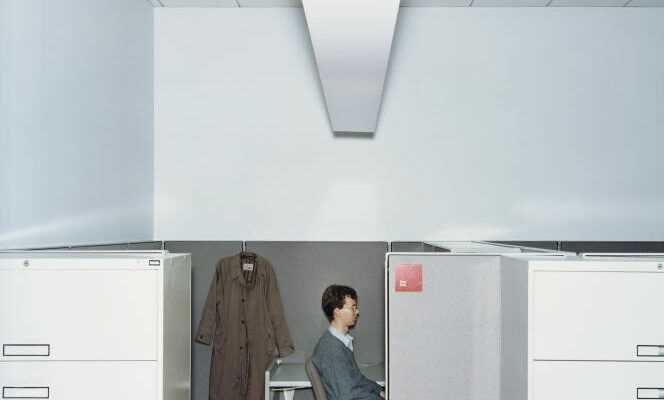TO At the start of the school year, the open spaces will be empty and the meeting rooms full. “We will come to the open space as we go to a concert, to feel belonging to a community and to create memories”, predicted Jean-Edouard Grésy, from the AlterNego agency. But, if, according to a survey conducted by the Malakoff Humanis health mutual, the first motivation to return to work would be to see colleagues again, it will not be in the open space that we can dance in the heart of the pit. .
Supposed to encourage exchanges, the trays have especially encouraged the wearing of noise-canceling headphones or the adoption of any behavior indicating that one wants to have peace. “In the absence of a physical barrier, open-plan employees create a fourth wall, indicating their desire for solitude through their physical expression or by short answers”, notes organizational researcher Edward Bernstein, in a study that finds a 70% drop in face-to-face interactions in open spaces.
To discuss, you will have to go to the meeting rooms, which will already be filled with those who use them for their visios, the bosses who have annexed them since they scramble to believe that they no longer have an office to get their subordinates to give up theirs.
The future is in collaborative spaces
Remember that, before Covid-19, it was fashionable to speak ill of meetings. We even pretended to run away from them. At the start of the school year, we will go to the office on purpose. “We have effected a rebalancing between individual workstations and collaborative spaces which have gone from 15% to 30%”, reports Laurence Doumerc, director of workplace management, a leading profession in the post-Covid-19 world, to Société Générale.
“If women telework more, there is a risk of hearing their voices less in meetings”, says Flore Pradère, director of research in a consulting company.
She was responsible for the new Les Dunes campus in Val-de-Fontenay (Val-de-Marne). “Since the office will be less and less the place of individual production, the days when the teams will meet on site, they will be collaborative and collective days. “ “Before the crisis, we were at 60%, 70% of traditional workstations, for 30%, 40% of collaborative surfaces, now we have gone to 50-50, and it would not surprise me that it ends up being s ‘reverse’, Rémi Calvayrac also predicts, workplace and design director at JLL, heavyweight in corporate real estate.
You have 54.49% of this article to read. The rest is for subscribers only.
